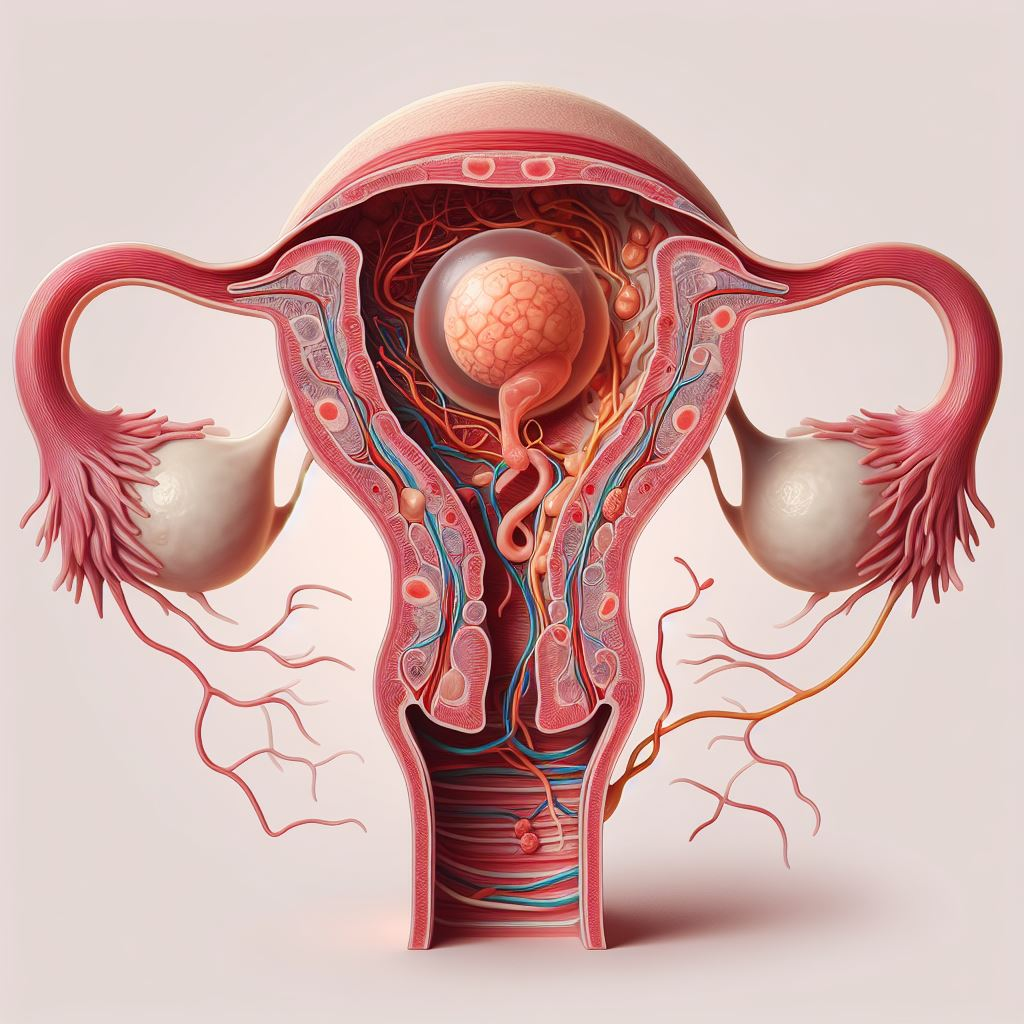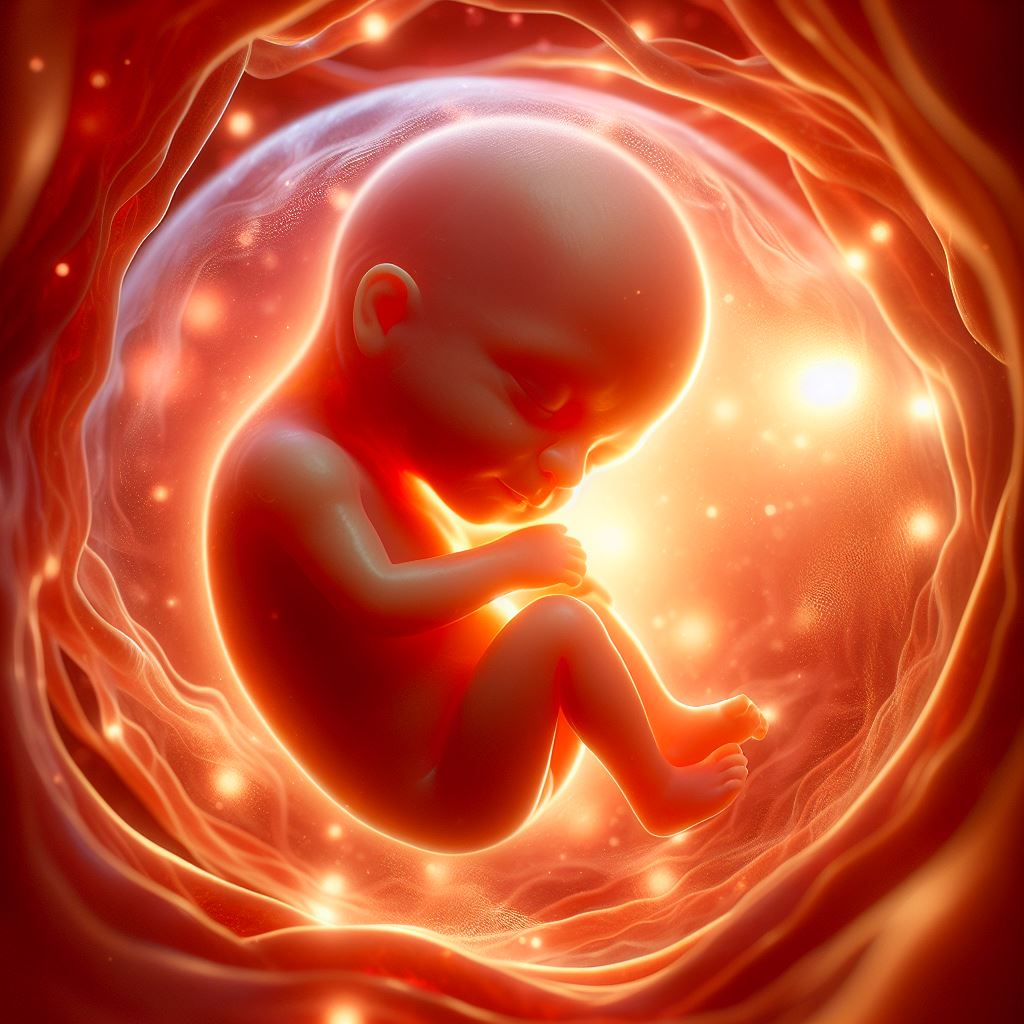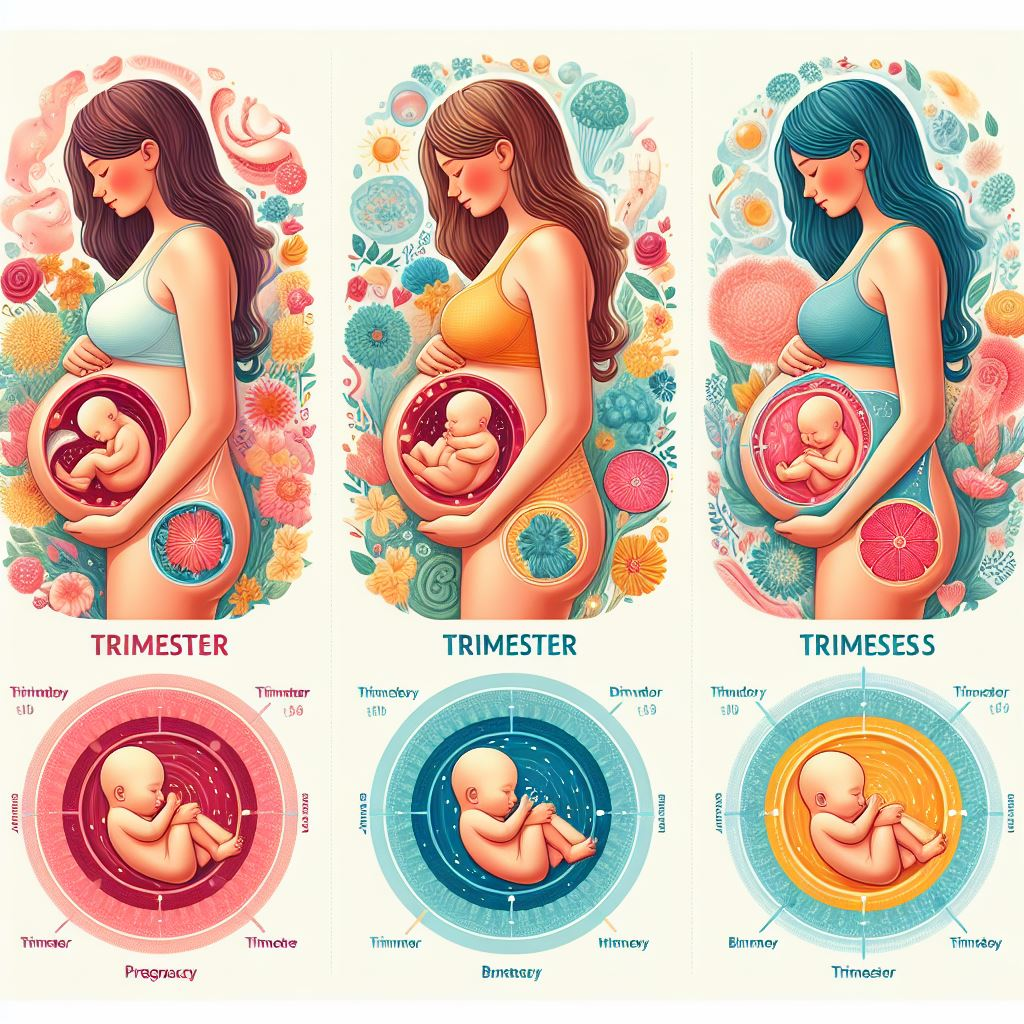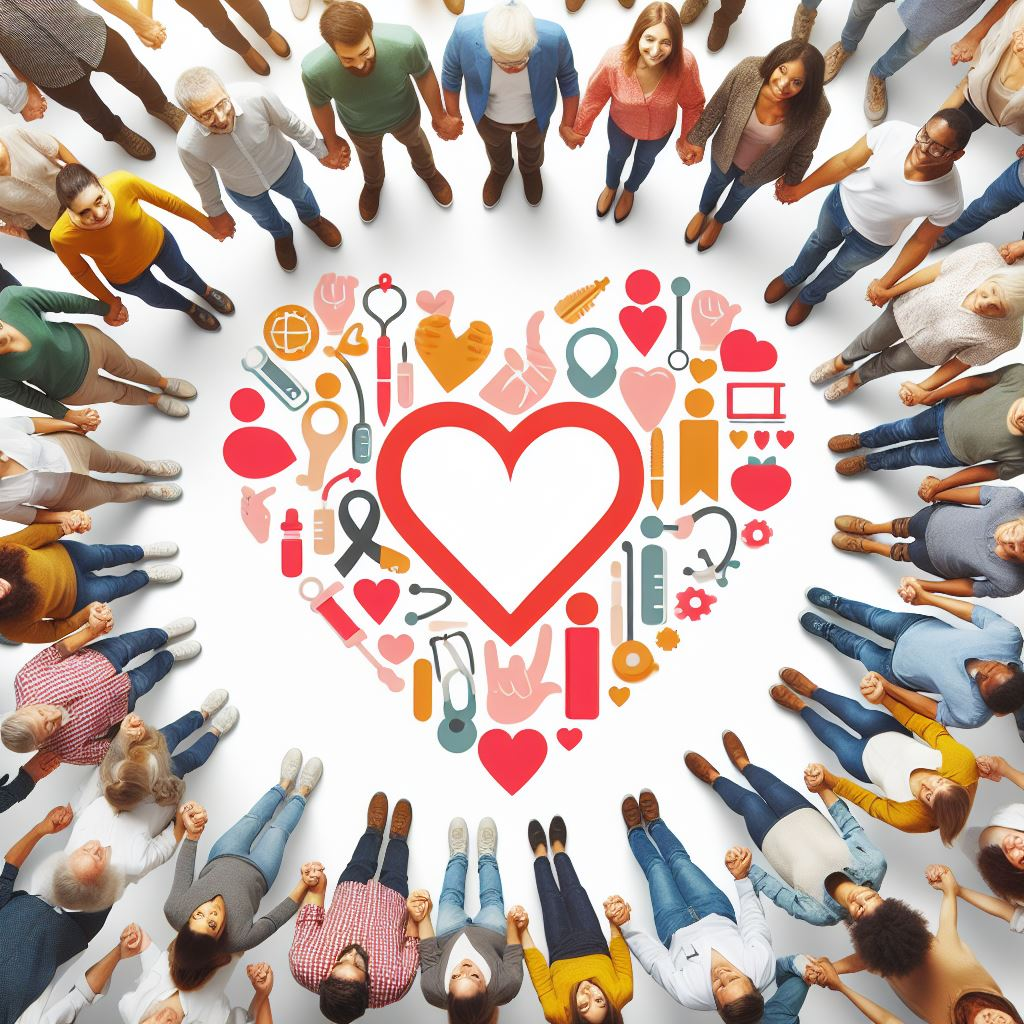
Introduction
Pregnancy is a miraculous journey that marks the beginning of new life. Series of changes that occur in a woman’s organs and tissues as a result of a developing fetus. It includes the whole process from conception to delivery which normally takes 266-270 days or approximately 9 months in humans.
Pre-events of pregnancy
1. Conception: There are six days in a typical woman’s menstrual cycle when intimacy can lead to pregnancy; these are called the “fertile window” or “fertile period” and include the five days coming up to ovulation as well as the day itself of ovulation.
sperm and ovum gets released and sperm fertilize the egg in ampulla region of fallopian tube which leads to formation of zygote and ultimately zygote leads to develop into fetus in approximately 9 months.
2. Cleavage: After fertilization, the zygote undergoes rapid cell division called cleavage. During cleavage, the zygote divides into smaller cells called blastomeres.

3. Morula Formation: As cleavage continues, the zygote forms a solid ball of cells called a morula.
4. Blastocyst Formation: The morula then develops into a blastocyst. A blastocyst is a hollow structure consisting of an outer layer of cells called the trophoblast, which will later develop into the placenta, and an inner cell mass, which will develop into the embryo.
5. Implantation: The blastocyst travels down the fallopian tube and into the uterus, where it implants itself into the uterine lining. This process, known as implantation, usually occurs about 6-7 days after fertilization.
6. Gastrulation: After implantation, the blastocyst undergoes a process called gastrulation, where it transforms into a three-layered structure known as the gastrula. The three layers are the ectoderm, mesoderm, and endoderm, which will give rise to different tissues and organs in the body.
Events of pregnancy

- In humans, the heart of the embryo develops after one month of pregnancy. With a stethoscope, one can pay careful attention to the heart sound to detect the early indications of a developing fetus.
- By the time the second month of pregnancy ends, the fetus begins to develop digits and limbs.
- By the end of third month (first trimester), most of the major organ systems are formed.
- The first movements of the fetus and appearance of hair on the head are observed during the fifth month
- By the end of sixth month (end of second trimester), the body is covered with fine hair, eye-lids separate, and eyelashes are formed.
- By the end of nine months of pregnancy, the fetus is fully developed and is ready for delivery.
Trimester breakdown

- First Trimester (Weeks 1-12):
- Conception and implantation occur.
- The baby’s major organs and body systems begin to form.
- Morning sickness and fatigue are common symptoms.
- The first prenatal appointment usually takes place, including ultrasound scans to confirm the pregnancy and estimate the due date.
- Second Trimester (Weeks 13-26):
- The baby’s movements become more pronounced and can be felt by the mother.
- Many of the early pregnancy symptoms, such as morning sickness, subside.
- The mother’s belly starts to visibly expand as the uterus grows.
- Prenatal screenings, such as the anatomy ultrasound, may be performed to assess the baby’s development.
- Third Trimester (Weeks 27-Birth):
- The baby continues to grow rapidly, gaining weight and developing fat stores.
- The mother may experience increased discomfort due to the baby’s size and pressure on internal organs.
- Braxton Hicks contractions, or “practice contractions,” may occur as the body prepares for labor.
Parturition
- Parturition is the term used to describe the delivery of the fetus during childbirth. The fetus is pushed out or delivered when the uterus contracts forcefully during the end of the pregnancy.
- Parturition is brought on by a neuroendocrine process. The placenta and the fully grown fetus provide the signals for parturition, which cause the fetal ejection reflex—a slight contraction of the uterus.
- This causes the mother pituitary to release oxytocin. Stronger uterine contractions are brought on by oxytocin’s impact on the uterine muscle, which in turn encourages more oxytocin release. Uterine contractions become stronger and stronger as a result of the ongoing stimulatory reflex between oxytocin release and contractions. Parturition, the baby’s escape from the uterus through the birth canal, results from this.
Post-events of pregnancy
Lactation
- During pregnancy, the female’s mammary glands undergo differentiation and begin to produce milk towards the conclusion of the pregnancy through a process known as lactation.
- This facilitates the mother’s feeding of the infant. Colostrum, the term for the milk produced during the first few days of breastfeeding, contains many antibodies that are vital for the development of resistance in newborns.
- Doctors advise breastfeeding for the first few months of an infant’s life in order to raise a healthy child.
Resumption of Menstruation and Fertility: Menstruation typically resumes within a few weeks to a few months after childbirth, although it can vary widely among women. It’s important for the mother to consider contraception if she wishes to delay or prevent another pregnancy.
Parenting and Newborn Care: The postpartum period involves learning how to care for a newborn, including feeding, diapering, bathing, and soothing techniques. Parenting classes, support groups, and resources from healthcare providers can be valuable for new parents.
How to do Child care after pregnancy
- Feeding: Whether breastfeeding or formula feeding, ensuring the baby receives adequate nutrition is essential for growth and development. Breastfeeding provides numerous health benefits for both the baby and mother, including immune support and bonding, while formula feeding offers a convenient alternative for mothers who are unable or choose not to breastfeed.

- Bathing: Babies need gentle bathing to keep their skin clean and healthy. Bathing frequency can vary depending on personal preference and climate, but generally, newborns do not need to be bathed daily.
- Sleeping: Safe sleep practices are crucial to reduce the risk of Sudden Infant Death Syndrome (SIDS) and other sleep-related accidents. Babies should be placed on their backs to sleep, on a firm mattress with no soft bedding or toys nearby.
- Healthcare: Regular pediatric checkups are essential to monitor the baby’s growth and development, track immunizations, and address any health concerns. Parents should follow the recommended schedule of well-baby visits and consult a healthcare provider if they have any questions or concerns about their baby’s health.
- Social Support: Caring for a newborn can be demanding, so it’s essential for parents to seek support from family, friends, and healthcare professionals. Joining parenting groups, attending classes, and connecting with other parents can provide valuable support and guidance.
How to do mother care during and after pregnancy
During Pregnancy:

- Prenatal Care: Regular prenatal checkups with healthcare providers are crucial for monitoring the mother’s health and the baby’s development. These visits may include physical exams, ultrasounds, and screenings for genetic conditions and gestational diabetes.
- Healthy Diet: Eating a balanced and nutritious diet is important for meeting the increased nutritional needs of pregnancy. This includes consuming plenty of fruits, vegetables, whole grains, lean proteins, and dairy products, and staying hydrated.
- Regular Exercise: Engaging in moderate exercise, with the approval of a healthcare provider, can help alleviate discomfort, improve mood, and promote overall health during pregnancy. Suitable activities may include walking, swimming, prenatal yoga, and low-impact aerobics.
- Adequate Rest: Getting enough rest and sleep is essential for managing fatigue and supporting the body’s physical changes during pregnancy. Pregnant women should prioritize sleep and listen to their bodies to determine their individual needs.
- Prenatal Vitamins: Taking prenatal vitamins, including folic acid, iron, calcium, and other essential nutrients, is recommended to support maternal and fetal health. These supplements help prevent birth defects and ensure optimal nutrition during pregnancy.
- Avoid Harmful Substances: Avoiding alcohol, tobacco, and illicit drugs is critical for protecting the health of the mother and the developing baby. Exposure to these substances can lead to serious complications and birth defects.
- Stress Management: Pregnancy can be a stressful time, so finding healthy ways to manage stress is important. Techniques such as deep breathing, meditation, mindfulness, and relaxation exercises can help reduce stress and promote emotional well-being.

After Pregnancy (Postpartum):
- Physical Recovery: Giving birth is physically demanding, so allowing time for recovery is essential. Mothers should follow healthcare provider recommendations for postpartum care, including managing pain, monitoring incisions or tears, and practicing pelvic floor exercises.
- Rest and Self-Care: The postpartum period can be exhausting, so mothers should prioritize rest and self-care. Accepting help from family and friends, delegating tasks, and taking breaks when needed can prevent burnout and support recovery.
- Nutritious Diet: Eating a balanced diet rich in nutrients, especially if breastfeeding, is important for replenishing energy stores and supporting milk production. Including plenty of fruits, vegetables, whole grains, lean proteins, and healthy fats can promote healing and overall well-being.
- Hydration: Staying hydrated is crucial, especially for breastfeeding mothers. Drinking plenty of water throughout the day helps maintain milk supply, supports recovery, and prevents dehydration.
- Emotional Support: The postpartum period can bring a range of emotions, including joy, anxiety, and sadness. Seeking emotional support from partners, family members, friends, and healthcare professionals can help mothers navigate the challenges and adjustments of new motherhood.
- Physical Activity: Gradually easing back into exercise, with the approval of a healthcare provider, can help restore strength and stamina after childbirth. Starting with gentle activities such as walking and pelvic floor exercises and gradually increasing intensity can support postpartum recovery.
- Postpartum Checkups: Attending postpartum checkups with healthcare providers is important for monitoring recovery, addressing any concerns, and discussing contraception options. These visits also provide opportunities to assess the baby’s growth and development.

FAQ (frequently asked question)
Q1. what are signs of pregnancy?
Ans.
- missed period.
- nausea and vomiting.
- breast tenderness and enlargement.
- fatigue.
- passing urine more frequently than usual, particularly at night.
Q2. What is the age limit for getting pregnant?
Ans. A woman’s peak reproductive years are between the late teens and late 20s. By age 30, fertility starts to decline. This decline happens faster once you reach your mid-30s. By 45, fertility has declined so much that getting pregnant naturally is near to impossible.
Q3. How to check if you’re pregnant at home?
Ans. You’ll either urinate on a pregnancy dipstick, or urinate in a cup and then put the dipstick in the urine. You’ll wait a few minutes for the results. At-home pregnancy tests claim to be about 99 percent accurate.
Q4. How to check if you’re pregnant?
Ans. You can use pregnancy test kit.
Q5. Which Medicines Are Safe during pregnancy?
Ans. No medication, whether prescribed or over-the-counter, is always safe for all patients. However, medications are sometimes required. Make sure your doctor is aware of your pregnancy. Then, only take the medications they prescribe for you.
Conclusion

Pregnancy is a transformative journey, marked by physical, emotional, and psychological changes. From conception to childbirth, expectant parents experience a range of joys and challenges as they prepare to welcome a new life into the world.
Table of Contents
Go and visit dusearchit.in and get more knowledge about others topics.

Pingback: How hemophilia is a dangerous for a life? (2024)
Pingback: How sickle cell anemia dangerous for us? symptom, cause2024
Pingback: How dangerous is phenylketonuria ? symptoms.(2024)
My site Webemail24 covers a lot of topics about Website Traffic and I thought we could greatly benefit from each other. Awesome posts by the way!
thanks a lot!!
I like how well-written and informative your content is. You have actually given us, your readers, brilliant information and not just filled up your blog with flowery texts like many blogs today do. If you visit my website Seoranko about Blogging, I’m sure you can also find something for yourself.
Thanks a lot!!!!
Your site visitors, especially me appreciate the time and effort you have spent to put this information together. Here is my website Article Star for something more enlightening posts about Search Engine Optimization.